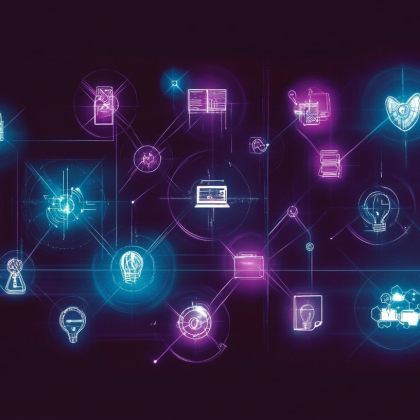What is RAG? Understanding Retrieval-Augmented Generation

Unlocking Advanced AI Capabilities with Retrieval-Augmented Generation
Retrieval-Augmented Generation (RAG) is an innovative AI framework that enhances large language models by integrating external knowledge sources. It addresses key limitations of traditional LLMs, such as static knowledge and factual inaccuracies. As reported by NVIDIA, RAG enables AI models to provide more accurate, up-to-date, and contextually relevant responses by referencing specified documents or databases, making it particularly valuable for enterprises seeking to leverage AI while maintaining control over information quality and relevance.
RAG Overview
This AI framework combines the strengths of traditional information retrieval systems with the capabilities of generative large language models (LLMs). By integrating external knowledge sources, RAG enables AI models to generate more accurate, current, and relevant responses to specific needs. The concept gained prominence through research by Patrick Lewis and a team from Meta (formerly Facebook) in 2020. RAG is particularly suited for knowledge-intensive tasks where human experts would typically consult external sources, making it valuable for enterprises seeking to leverage AI while maintaining control over information quality and context
Retrieval-Augmented Generation Working Process
The RAG process consists of four key stages: indexing, retrieval, augmentation, and generation. External data is converted into LLM embeddings during indexing and stored in a vector database. The retrieval phase selects the most relevant documents when a query is made. The augmentation stage then integrates this retrieved information into the LLM’s input through prompt engineering. Finally, the generation phase produces output based on the query and the retrieved documents. This process can be enhanced through various improvements, such as using hybrid vectors for faster processing, implementing retriever-centric methods for better database hits, and redesigning language models to work more efficiently with retrievers.
Addressing Static Knowledge in LLMs
Unlike traditional LLMs, which are limited to their training data, RAG enables models to access current and domain-specific information, ensuring responses remain relevant and up-to-date. This approach is particularly valuable for enterprises, as it allows customization of AI tools to incorporate organizational knowledge and best practices without expensive retraining. By grounding responses in external, authoritative sources, RAG significantly improves factual accuracy and reduces the likelihood of hallucinations, addressing a key challenge conventional language models face.
Enhancing Factual Accuracy
By grounding responses in external, authoritative sources, RAG significantly improves the factual accuracy of LLM outputs and reduces the likelihood of hallucinations. This approach allows models to generate responses consistent with the retrieved factual information, minimizing contradictions and inconsistencies in the generated text. Additionally, RAG enables the provision of source citations, allowing users to verify the information and enhancing overall transparency and trust in AI-generated content.
Some contrarian observations
– domain specific models are worse than RAG + good prompt engineering on general LLMs
– LLMs will reach a ceiling between an MMLU of 93- 96
– Getting rid of hallucinations completely without RAG is not possible
– We are still far away from AGI (~5-10…— Bindu Reddy (@bindureddy) December 19, 2023



